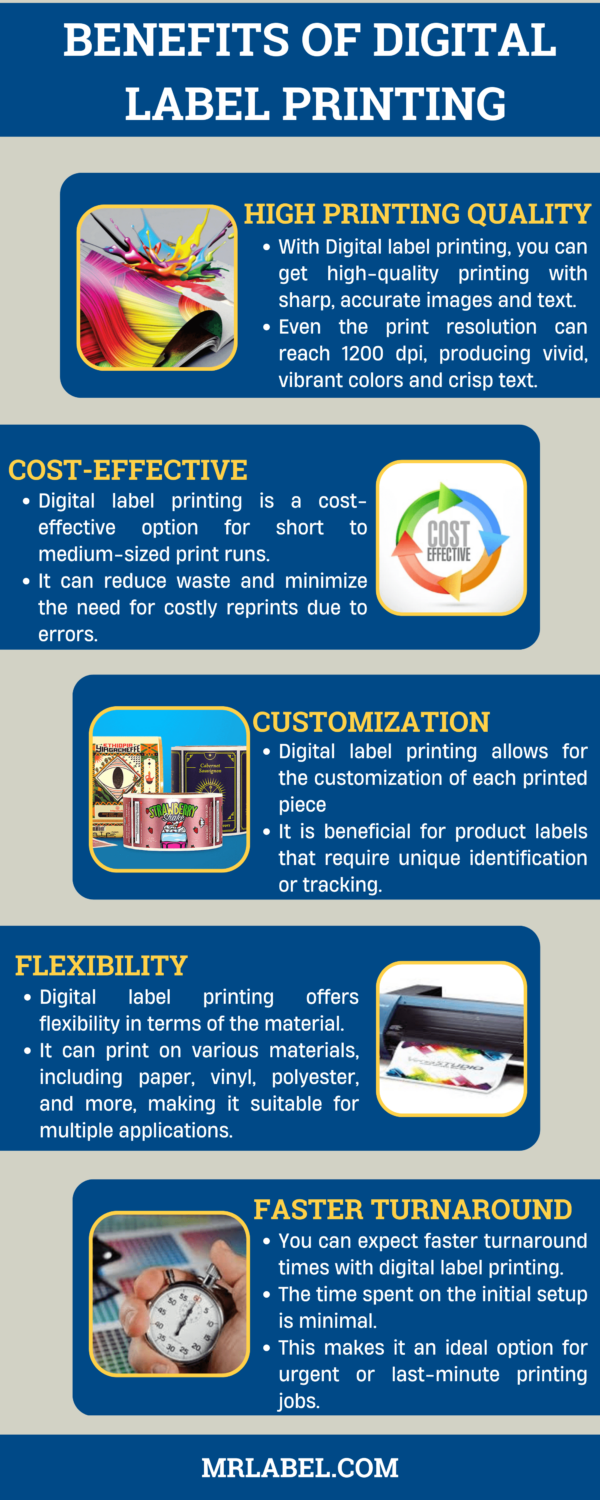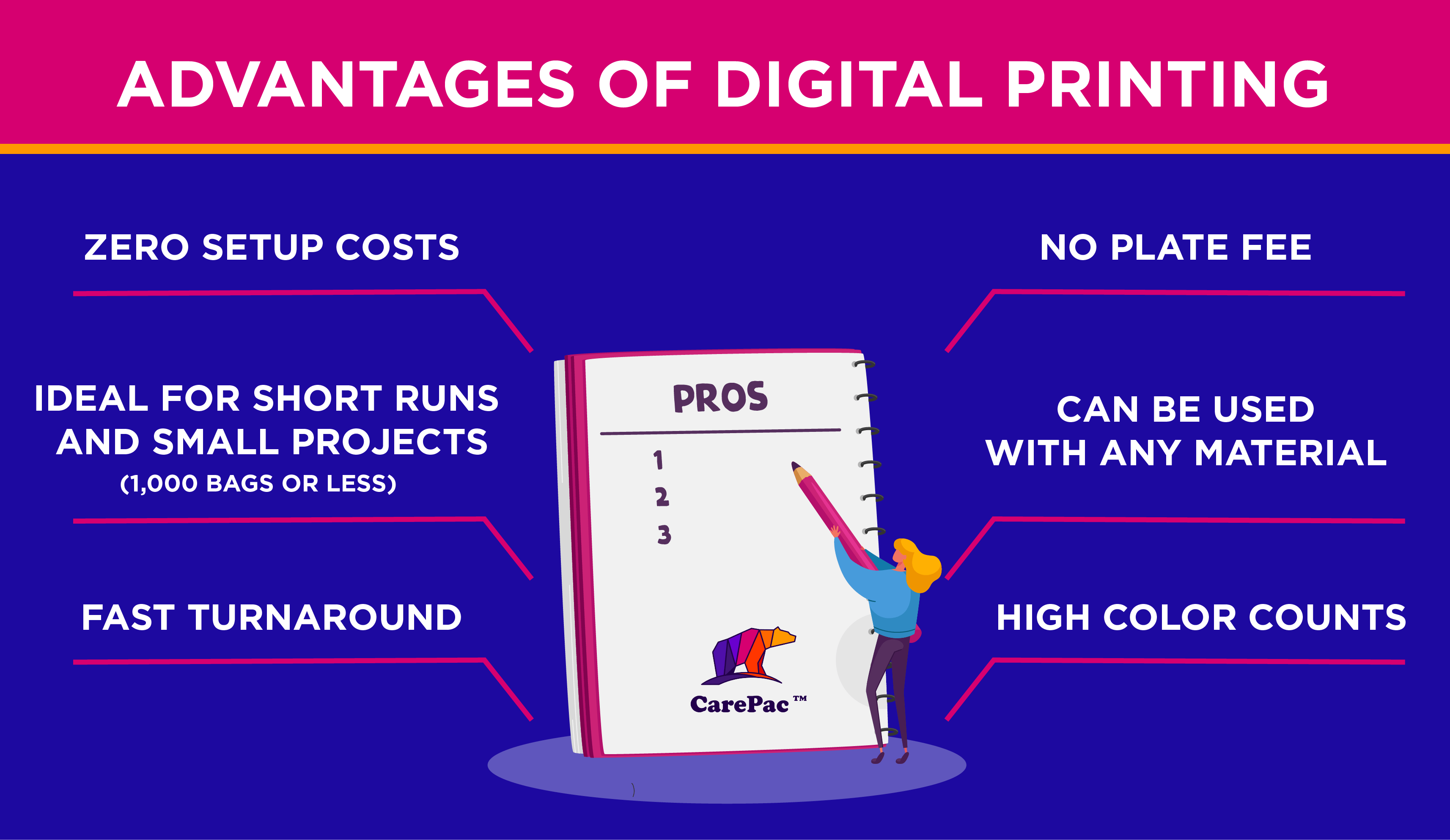The Main Principles Of Digital Printing
Wiki Article
The smart Trick of Digital Printing That Nobody is Discussing
Table of ContentsLittle Known Facts About Digital Printing.Not known Details About Digital Printing Top Guidelines Of Digital PrintingDigital Printing Can Be Fun For EveryoneSome Known Details About Digital Printing Fascination About Digital Printing
Variable data printing, such as straight mail with individualized codes and addresses, is ideally matched for electronic printing. Digital quick printing only requires four steps of style, evaluation, printing and binding to get whatever done. Digital fast printing has an unrivaled advantage: print on need.According to PMMI, electronic printing allows brands and makers to respond promptly to consumer needs while boosting the supply chain, reducing warehousing expense and waste, and taking pleasure in faster time to market. That all sounds terrific, however just how does this innovation do all that? The significant differentiator of these modern technologies is that there are no set up fees and no plates with electronic printing.
The Ultimate Guide To Digital Printing
According to Wikipedia, the best difference between electronic printing and traditional methods such as lithography, flexography, gravure, or letterpress - Digital Printing is that there is no requirement to change printing plates in electronic printing, whereas in these analog printing approaches home plates are repeatedly changed. This leads to quicker turnaround time and reduces expense when utilizing electronic printing.Speedy production means getting your product to market faster. It also means it's much easier and faster to make adjustments in the future, when you alter a dish, include a SKU, or produce seasonal packaging. Digital printing is very versatile, so it's easy to make modifications to the plan design swiftly. Everything goes back to home plates.
With traditional printing techniques, short-run printing is simply not possible. Because an excellent design can make or break your item, digital printing regularly produces high-grade, clear and vibrant graphics each time.
Digital printing is the process of printing digital-based pictures directly onto a selection of media substrates. There is no demand for a printing plate, unlike with balanced out printing. Digital files such as PDFs or desktop publishing files can be sent out straight to the electronic printing machine to publish on paper, photo paper, canvas, material, synthetics, cardstock and other substratums.
Digital Printing - Truths
According to PMMI, digital printing enables brand names and suppliers to respond swiftly to customer demands while improving the supply chain, reducing warehousing expense and waste, and enjoying faster time to market. That all noises fantastic, however exactly how does this modern technology do all that? The major differentiator of these innovations is Bonuses that there are no set-up costs and no plates with digital printing.This results in quicker turn-around time and reduces price when utilizing digital printing.

Little Known Questions About Digital Printing.
Much more inventory can imply even more waste later on. With conventional printing approaches, short-run printing is just not feasible. Since a fantastic design can make or damage your item, electronic printing regularly produces top quality, clear and vivid graphics each time. Digital printing on flexible bags adds the intense, dynamic, and accurate graphics have a peek here that almost bid consumers to connect and touch them.
According to PMMI, digital printing enables brand names and producers to react promptly to customer demands while boosting the supply chain, minimizing warehousing expense and waste, and appreciating faster time to market. That all sounds fantastic, but how does this innovation do all that? The major differentiator of these technologies is that there are no set up charges and no plates with electronic printing.
The Greatest Guide To Digital Printing
According to Wikipedia, the greatest difference between electronic printing and traditional methods such as lithography, flexography, gravure, or letterpress is that there is no requirement to change printing plates in electronic printing, whereas in these analog printing methods the plates are consistently changed. This results in quicker turnaround time and decreases price when making use of electronic printing.Fast manufacturing indicates getting your item to market quicker. It likewise implies it's simpler and faster to make adjustments later on, when you change a dish, include a SKU, or develop seasonal product packaging. Digital printing is extremely versatile, so it's very easy to make changes to the bundle style quickly. It all goes back to home plates.

Digital Printing Fundamentals Explained
Digital printing is the process of printing digital-based pictures directly onto a variety of media substrates. There is no need for a printing plate, unlike with balanced out printing. Digital files such as PDFs or desktop computer publishing files can be sent out straight to the digital printing press to publish on paper, picture paper, canvas, material, synthetics, cardstock and various other substrates.Report this wiki page